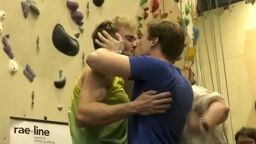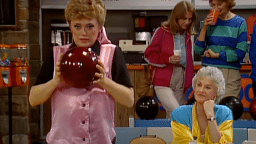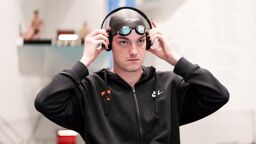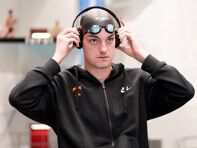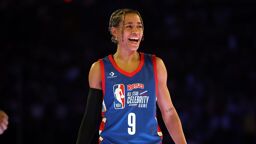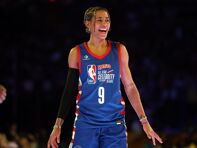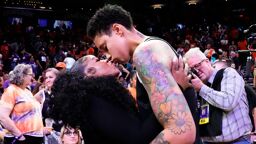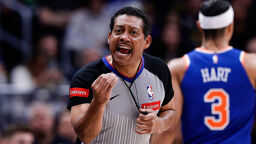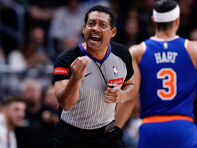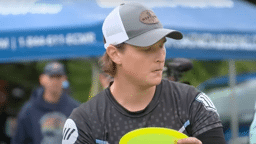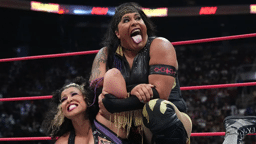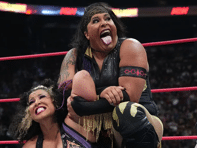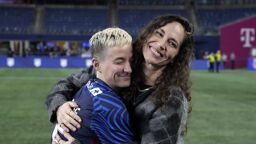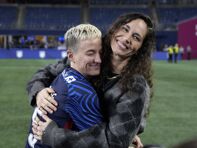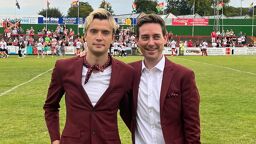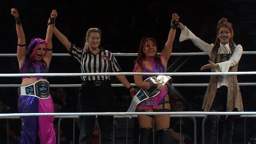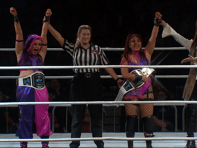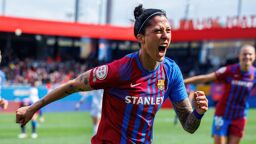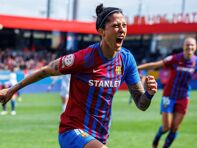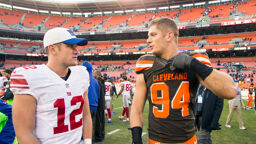Part of Outsports’ series on our 100 most important moments in gay sports history.
 Tennis, 1977. In 1976 the United States Tennis Association barred female transgender tennis player Renee Richards from playing as a woman in the U.S. Open. The issue at hand was a born-female rule, and the USTA said Richards would have to submit herself to a chromosomal test (which she would fail). Like any good athlete fighting for the victory, Richards sued the USTA for the right to play. A year later, the New York Supreme Court ordered the USTA grant Richards the right to play. It was a landmark ruling for transgender rights.
Tennis, 1977. In 1976 the United States Tennis Association barred female transgender tennis player Renee Richards from playing as a woman in the U.S. Open. The issue at hand was a born-female rule, and the USTA said Richards would have to submit herself to a chromosomal test (which she would fail). Like any good athlete fighting for the victory, Richards sued the USTA for the right to play. A year later, the New York Supreme Court ordered the USTA grant Richards the right to play. It was a landmark ruling for transgender rights.
Richards (then Richard Raskind) had previously played in the U.S. Open as a male five times from 1953-'60. In 1977 she became the first person to play as a male and then as a female. She played all five years from 1977-'81. Her best singles finish was a third-round loss in 1979; Though she made it to the finals of the women's doubles competition in 1977 (losing to Martina Navratilova and Betty Stove in the finals with partner Betty-Ann Stuart). She never competed in another Grand Slam tournament as a male or female.
Part of Outsports’ series on our 100 most important moments in gay sports history.
 Tennis, 1977. In 1976 the United States Tennis Association barred female transgender tennis player Renee Richards from playing as a woman in the U.S. Open. The issue at hand was a born-female rule, and the USTA said Richards would have to submit herself to a chromosomal test (which she would fail). Like any good athlete fighting for the victory, Richards sued the USTA for the right to play. A year later, the New York Supreme Court ordered the USTA grant Richards the right to play. It was a landmark ruling for transgender rights.
Tennis, 1977. In 1976 the United States Tennis Association barred female transgender tennis player Renee Richards from playing as a woman in the U.S. Open. The issue at hand was a born-female rule, and the USTA said Richards would have to submit herself to a chromosomal test (which she would fail). Like any good athlete fighting for the victory, Richards sued the USTA for the right to play. A year later, the New York Supreme Court ordered the USTA grant Richards the right to play. It was a landmark ruling for transgender rights.
Richards (then Richard Raskind) had previously played in the U.S. Open as a male five times from 1953-'60. In 1977 she became the first person to play as a male and then as a female. She played all five years from 1977-'81. Her best singles finish was a third-round loss in 1979; Though she made it to the finals of the women's doubles competition in 1977 (losing to Martina Navratilova and Betty Stove in the finals with partner Betty-Ann Stuart). She never competed in another Grand Slam tournament as a male or female.
Earlier in 1976 she had entered and won an amateur tournament in La Jolla, Calif. She didn’t tell anyone she was the former Richard Raskind, but rumor swirled around this 6-foot-3 female tennis player. It was soon after that that she was barred from the U.S. Open and the legal battles began.
The argument against her inclusion in the late 1970s was that men everywhere would have gender-reassignment surgery so they could win women's tennis tournaments. The slippery slope argument never panned out, as precious few elite transgender athletes have shown up in women's sports.
After her playing career was over, Richards went on to coach Navratilova.
She wrote two books about her experience and is the focus of an ESPN Films documentary about her life.
For more information:



